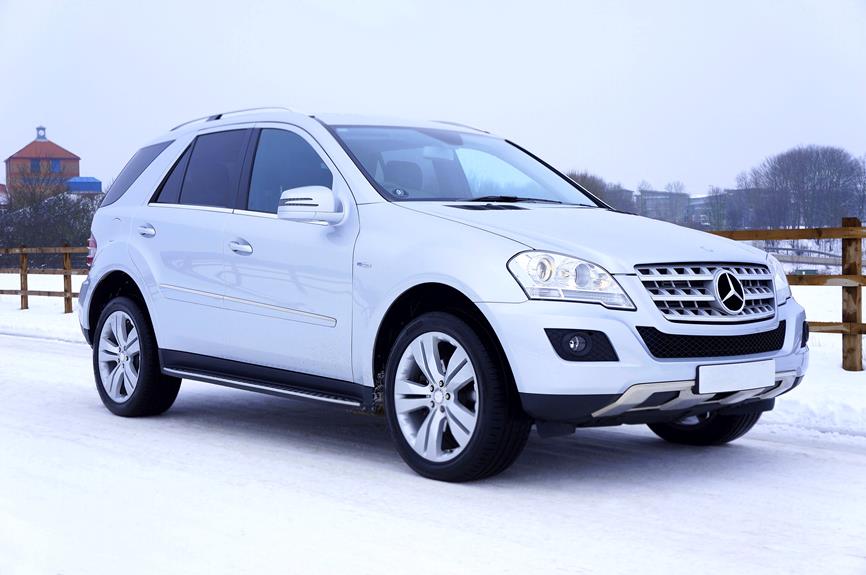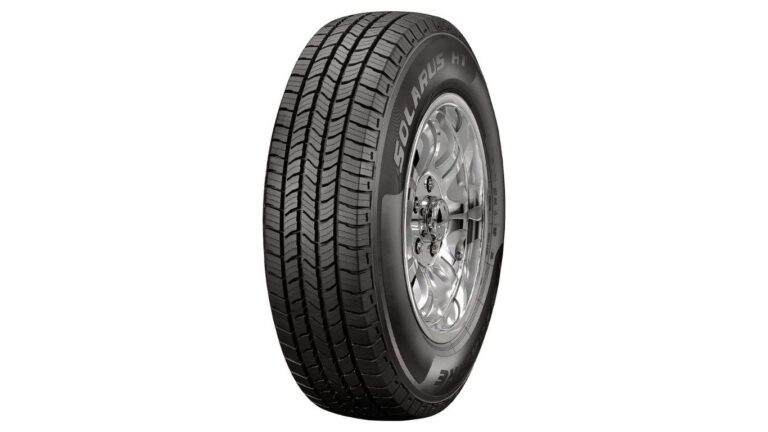How to Choose the Right Winter Tires
As winter approaches, it is essential to equip your vehicle with the right winter tires to ensure safe and reliable driving in challenging conditions. Choosing the ideal winter tires involves a careful analysis of various factors, such as tire ratings, driving needs, tire size, and tread patterns.
This article aims to provide an informative and detailed guide on how to select the perfect winter tires that offer optimal traction and grip performance. By following these expert insights, you can navigate the winter roads with confidence and peace of mind.
Key Takeaways
- Understand the tire rating system and choose tires with the appropriate winter tire compound
- Consult with a professional to ensure proper tire size and fitment compatibility for optimal performance and safety
- Select the right tread pattern for the driving conditions you encounter, such as directional or symmetrical tread patterns
- Consider the difference between studless and studded winter tires, taking into account local regulations and conditions
Understanding Winter Tire Ratings
To fully comprehend the varying performance capabilities of winter tires, it is essential to delve into the specifics of each tire's rating system. Winter tire ratings are designed to provide consumers with information about the tire's performance in different winter conditions.
One important aspect to consider is the winter tire compound. Winter tires are made with a special rubber compound that remains flexible in cold temperatures, providing better traction on snowy and icy roads. Different brands and models may use different compounds, so it's crucial to understand the specific characteristics of each tire.
Another important factor to consider is tire pressure. Proper tire pressure is essential for optimal performance and safety, especially in winter conditions. Cold temperatures can cause tire pressure to drop, so it's important to regularly check and adjust tire pressure accordingly. Most tire manufacturers provide recommended tire pressure values for winter conditions, taking into account factors such as load and temperature.
Understanding winter tire ratings, including the specific compound used and tire pressure recommendations, can help consumers make informed decisions when choosing the right winter tires for their vehicles. By considering these factors, drivers can ensure they have tires that provide the best possible traction and performance during the winter months.
Evaluating Your Driving Needs
Regularly evaluating your driving needs is crucial to ensure that you have the right tires equipped on your vehicle for optimal safety and performance. When it comes to evaluating your driving needs, there are a few factors to consider.
First and foremost, you should assess the typical driving conditions you encounter. If you live in an area with harsh winters, it may be necessary to invest in winter tires that provide superior traction on snow and ice.
Another important factor to consider is your budget. Tires come in a wide range of prices, so it is important to determine how much you are willing to spend. However, it is important to remember that cheaper tires may not last as long or provide the same level of performance as more expensive options.
In addition to evaluating your driving conditions and budget, it is also important to consider the lifespan of the tires you are considering. The lifespan of a tire can vary depending on several factors, including the quality of the tire, the driving conditions, and how well they are maintained. It is important to choose tires that will last for a reasonable amount of time to ensure that you are getting the most value for your money.
Considering Tire Size and Fitment
When considering tire size and fitment, it is important to consult with a professional to ensure the proper fit for your vehicle. Fitment compatibility refers to the ability of a tire to fit correctly on a vehicle without any issues or compromises to safety and performance.
Tire size selection plays a crucial role in determining the fitment compatibility. To choose the right tire size, several factors need to be considered. These include the vehicle's make and model, the intended use of the tires, and any specific requirements or recommendations from the manufacturer. Consulting with a professional ensures that all these factors are taken into account, leading to a suitable tire size selection.
Fitment compatibility is essential for a variety of reasons. Firstly, tires that are too small or too large for a vehicle can negatively impact its handling, stability, and overall performance. Secondly, incorrect fitment can cause excessive wear and tear on the tires, leading to reduced lifespan and potential safety risks. Lastly, certain vehicles may have specific fitment requirements due to their suspension setup or clearance limitations.
Exploring Tread Patterns for Different Conditions
Implementing various tread patterns is integral to optimizing tire performance in different weather and road conditions. When it comes to winter tires, selecting the right tread pattern is crucial for ensuring safety and enhancing performance on snow-covered and wet roads. Snow tire options offer a range of tread patterns designed to provide maximum grip and traction in icy and snowy conditions.
One popular tread pattern for winter tires is the directional or 'V-shaped' pattern. This design features deep grooves and channels that efficiently evacuate water and slush, reducing the risk of hydroplaning. The V-shaped pattern also enhances traction on snowy surfaces by digging into the snow and providing better grip.
Another option is the symmetrical tread pattern, which features uniform blocks and grooves across the tire's surface. This design allows for excellent stability and balanced performance on both dry and wet roads. The symmetrical pattern also ensures consistent traction and handling in snowy conditions.
For extreme winter conditions, tires with a stud pattern can provide superior grip on icy surfaces. These tires have metal studs embedded in the tread, which dig into the ice and provide excellent traction. However, it's important to note that studded tires may not be legal or necessary in all regions, so it's essential to check local regulations and conditions before considering this option.
Comparing Studless and Studded Winter Tires
When it comes to choosing winter tires, one important aspect to consider is the difference between studless and studded options.
Studless winter tires are designed with a specialized tread pattern that provides excellent grip on icy roads, while also offering a quiet and comfortable ride.
On the other hand, studded winter tires feature metal studs that enhance traction on icy surfaces but can generate more noise and vibrations on dry pavement.
Grip on Icy Roads
One must consider the grip on icy roads when deciding between studless and studded winter tires. Winter tire technology advancements have significantly improved the grip and performance of both types of tires.
Studless winter tires are designed with advanced rubber compounds and tread patterns that provide excellent traction on icy roads. They use thousands of small channels, called sipes, to enhance grip and evacuate water from the tire surface.
On the other hand, studded winter tires have metal studs embedded in the tread, which provide additional traction on ice. However, it is important to note that the grip of studded tires is limited to ice and can be less effective on dry or wet surfaces.
Regardless of the type of tire chosen, proper tire inflation is crucial for optimal grip and performance. Underinflated tires can reduce traction and increase the risk of hydroplaning, while overinflated tires can lead to reduced contact with the road and decreased grip. Therefore, regular tire pressure checks and maintenance are essential for safe winter driving.
Noise and Vibrations
While comparing studless and studded winter tires, it is important to consider the effects of noise and vibrations on driving comfort and overall performance. Here are three key points to keep in mind when it comes to reducing noise and minimizing vibrations:
- Noise Reduction: Studless winter tires are designed with advanced tread patterns and rubber compounds that help to reduce noise levels. These tires are specifically engineered to provide a quieter and smoother ride, enhancing the overall driving experience.
- Vibration Dampening: Studded winter tires, on the other hand, can generate more vibrations due to the metal studs embedded in the tread. This can result in a slightly rougher ride. Studless tires, without the metal studs, offer a smoother and more comfortable driving experience by minimizing vibrations.
- Performance Balance: It's crucial to strike a balance between noise reduction and performance. While studless tires excel in reducing noise and vibrations, they may not offer the same level of traction on icy surfaces as studded tires. Consider your driving needs and priorities before making a decision.
When choosing winter tires, it's important to consider the trade-offs between noise reduction, vibration dampening, and overall performance. By understanding these factors, you can make an informed decision that aligns with your driving preferences and requirements.
Assessing Traction and Grip Performance
The evaluation of traction and grip performance is crucial when selecting winter tires for optimal safety and control on icy or snow-covered roads. As winter approaches, it becomes essential to choose the right winter tire brand that offers excellent traction and grip to ensure a smoother and safer driving experience. One of the key factors to consider is tire pressure for winter driving. Maintaining the recommended tire pressure can significantly improve traction and grip on slippery surfaces.
To better understand the traction and grip performance of different winter tire brands, let's take a look at the comparison table below:
| Winter Tire Brand | Traction Performance | Grip Performance |
|---|---|---|
| Brand A | Excellent | High |
| Brand B | Good | Moderate |
| Brand C | Average | Low |
By assessing the traction and grip performance of different winter tire brands, you can make an informed decision based on your driving needs and the weather conditions in your area. Remember that having excellent traction and grip can provide you with the freedom to drive with confidence even in challenging winter conditions.
In the next section, we will discuss the importance of budgeting for winter tire purchase and maintenance, ensuring that you have a well-rounded understanding of choosing the right winter tires for your vehicle.
Budgeting for Winter Tire Purchase and Maintenance
An effective approach to budgeting for winter tire purchase and maintenance is to carefully analyze your vehicle's specific needs and prioritize safety over cost.
When it comes to winter tire maintenance, there are a few key factors to consider in order to make the most of your budget:
- Tire Storage: Investing in proper tire storage can help prolong the lifespan of your winter tires. Storing them in a cool, dry place away from direct sunlight and extreme temperatures will prevent premature deterioration. Consider using tire storage bags or racks to keep them organized and protected.
- Winter Tire Installation: While it may be tempting to save money by installing your winter tires yourself, it is highly recommended to have them professionally installed. This ensures that they are mounted correctly, with the proper balance and alignment, maximizing their performance and safety.
- Regular Maintenance: Regular maintenance is crucial for the longevity and performance of your winter tires. This includes regular inspections for tread wear, proper inflation, and rotation to ensure even wear. It is also important to check for any signs of damage, such as punctures or bulges, and address them promptly.
Frequently Asked Questions
What Are the Benefits of Using Winter Tires Over All-Season Tires in Winter Conditions?
The benefits of using winter tires over all-season tires in winter conditions include improved traction, handling, and braking performance on snow and ice. Winter tires are specifically designed to provide optimal performance in cold weather, making them worth the investment.
Can I Use All-Season Tires Instead of Winter Tires in Snowy and Icy Conditions?
Using all-season tires in winter conditions is possible, but not recommended. While they offer convenience and cost savings, they lack the specialized features of winter tires that provide optimal traction and control on snowy and icy surfaces.
How Often Should Winter Tires Be Replaced?
Winter tires should be replaced when their tread depth reaches 6/32 of an inch to ensure optimal performance in winter conditions. The lifespan of winter tires depends on factors such as usage, road conditions, and maintenance.
Are There Any Specific Driving Techniques I Should Use When Driving With Winter Tires?
When driving with winter tires, it is important to maintain proper winter tire maintenance, such as checking tire pressure and tread depth regularly. Additionally, it is crucial to dispel common misconceptions about winter tires to ensure safe and effective driving.
Can I Use Winter Tires on All Four Wheels of My Vehicle or Should I Only Use Them on the Front or Rear?
Using winter tires on all four wheels of a vehicle offers superior traction and control in snowy and icy conditions. However, using them only on the front or rear can also provide benefits depending on the driving conditions and vehicle type.
Conclusion
In conclusion, choosing the right winter tires requires a thorough understanding of tire ratings. This includes evaluating the tire's speed rating, load index, and temperature rating to ensure it is suitable for winter driving conditions.
Additionally, drivers should consider their specific driving needs when selecting winter tires. This may involve assessing factors such as the average winter temperatures in their area, the types of roads they typically drive on, and the amount of snow and ice they encounter.
Tire size and fitment are also important considerations when choosing winter tires. It is crucial to select tires that are the correct size for your vehicle and that are compatible with its specific make and model.
Exploring different tread patterns for winter tires is another important step. Tread patterns vary and are designed to provide optimal traction and grip in different conditions. Some patterns are better suited for snowy or icy roads, while others perform well on wet or slushy surfaces.
When choosing winter tires, drivers must also decide between studless and studded options. Studless tires offer excellent traction on snow and ice without the need for metal studs, while studded tires have small metal studs embedded in the tread for enhanced grip.
Assessing the traction and grip performance of winter tires is crucial. Drivers should look for tires that have high ratings for handling and braking in winter conditions.
Finally, budgeting for the purchase and maintenance of winter tires is essential. Winter tires can be a significant investment, and it is important to consider both the upfront cost of purchasing the tires and the ongoing costs of maintenance, such as tire rotations and replacements.
By carefully considering all of these factors and making an informed decision, drivers can ensure their safety and maximize their vehicle's performance during winter conditions.







